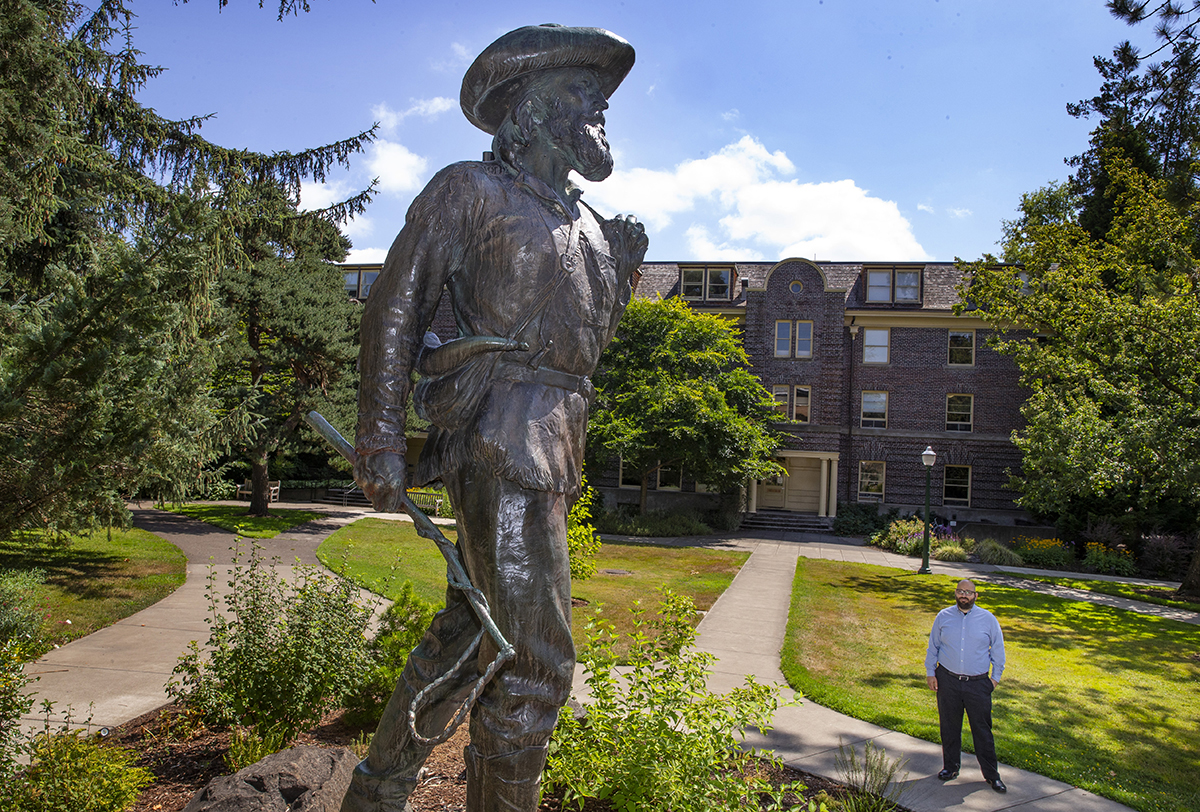
Remedying racist symbols on campus
preserve historical statues while respecting inclusivity
The Pioneer Father watches over hundreds of students rushing to class on a typical day on the University of Oregon campus. The 13-foot pioneer looks triumphant, or maybe domineering — it depends who's looking at it.
The sight of the pioneer in motion may stir up feelings of ancestral pride — for most students it stirs up nothing at all — but for many Native American students, the statue is a reminder that the university was not originally intended for them.
When the statue was installed 100 years ago, it was done to celebrate the success of the Anglo-Saxon race and their fight against “savage Indians."
As historical symbols and monuments across the U.S. are broadly scrutinized for perpetuating just one side of history, universities such as UO continue to seek solid ground on how to deal with the legacies of racism embedded in their campuses via statues and building names. Schools are being forced to ask themselves how to build an inclusive environment while balancing how to accurately preserve historical monuments and responsibly recognize their role in history.
The oppressive influence
This spring marked the 100-year anniversary of the Pioneer Father’s arrival to campus. The bronze statue stands on top of a boulder and its plaque reads simply, "Presented to the University of Oregon by Joseph N. Teal 1919." The centennial piqued the interest of UO doctoral candidate and historian Marc Carpenter who, with the help of the Oregon Heritage Fellowship, took a more research-based approach to long-standing concerns with the statue.
In reviewing letters, speech transcripts and other historical documents, Carpenter cracked open the history of the Pioneer Father. He shared a report of his findings with the UO team tasked with addressing the statue and symbols like it.
“My findings were that it was put up as a kind of general tribute, but, much more so than other statues, violence against Native people was front and center on what it was trying to commemorate,” he said.
Carpenter's research echoed frustrations that had been boiling for years among Native American students about the statue’s presence on campus, sparking demands to move it.
“The statue either misrepresents Oregon's history or at least tells a very one-sided story of Oregon's history,” said Bret Gilbert, former co-director of the Native American Student Union at UO. “Whether it’s erasing it or not, it perpetuates the wide-held belief that this land was discovered and uninhabited ... and that's not the history of this land.”
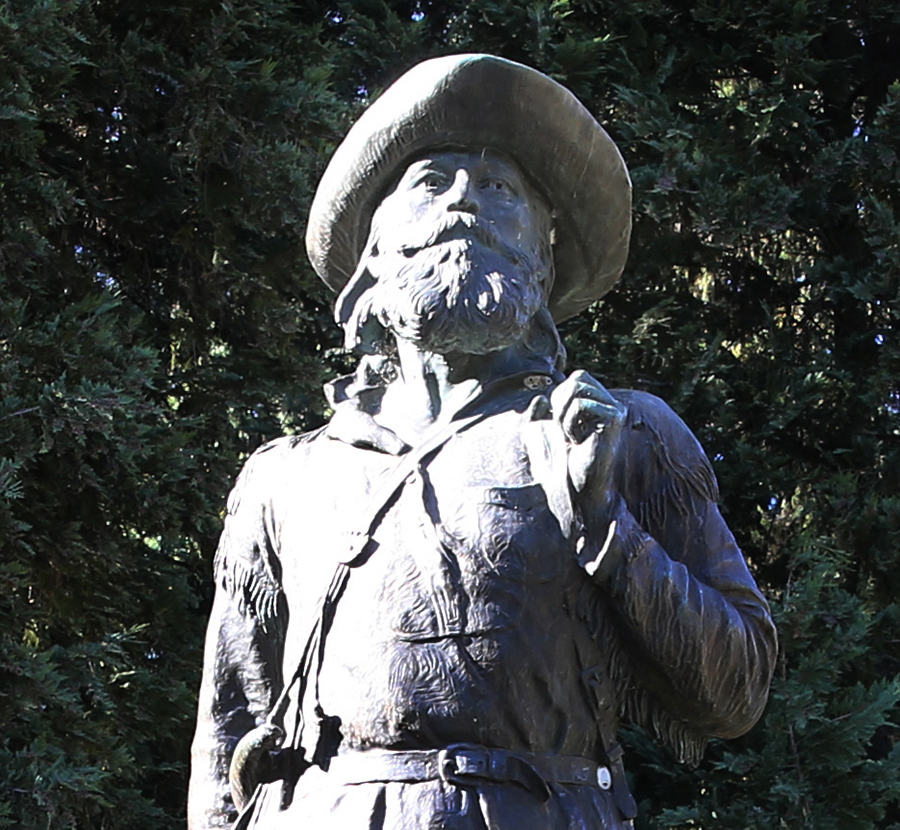
Carpenter’s research explored the lives and intentions of the statue's key players: the funder, the sculptor and the university.
The Pioneer Father statue was almost wholly funded by Joseph Nathan Teal — a lawyer, lumberman, Columbia River booster and occasional civil servant.
Teal previously funded statues but what spurred the commission of Pioneer Father is unclear to Carpenter. Teal asserted it was meant to honor the pioneers generally, and the details, including the intent, were left to the artist. On Jan. 27, 1917, Teal contracted the sculptor, Alexander Phimister Proctor, a famed Western artist who already planned to sculpt the ideal pioneer man — which he described as rugged, calm and an Indian killer.
When the Pioneer Father statue was revealed on campus in 1919, the President of the Oregon Historical Society made a speech championing the virtues of the Anglo-Saxon race and praised the Anglo-Saxon’s fight of “savage Indians.”
Carpenter asserts that Proctor’s characterization of the ideal pioneer as an “Indian killer” character matters. His report made this point with examples of other work by the artist, including Indian Maiden and Fawn, a sculpture inspired by an indigenous beauty queen that Proctor had seen clothed but decided to remove her clothing in his depiction.
“Proctor’s amazing artistic eye was trammeled by a colonizing gaze, something clearest in the near-nudity of so many of his Native subjects,” Carpenter said in his report.
Carpenter argues white supremacist violence seen in the statue by Native students was part of the artist’s intent as Procter laid out his beliefs both in writing and through his work.
“It has been a discussion within our group for a long time how the statue makes us feel,” Gilbert said. “A lot of students feel very uncomfortable around it and feel it runs very counter to a lot of the conversations we try to start on campus and, ultimately, what we think the university’s mission statement is about now.”
The issue of the Pioneer Father statue has escalated to anonymous cases of vandalism in 2019 and protests from the student union. UO President Michael Schill said he was aware of some concerns about the statue, but they didn’t come to the forefront until this year.
“Certainly the pioneer statue tells the story of the state of Oregon, (and) a lot of the United States. There are statues all over the West,” Schill said. “It’s telling a particularly positive story from the viewpoint of the dominant culture group, but what it’s not telling is the story from Native American groups that were here before them.
So if you're just walking around and you don't know that story, you just think, 'Oh this wonderful story about discovery of the frontier.' And there's some of that to this, but there's also a darker side to it.”
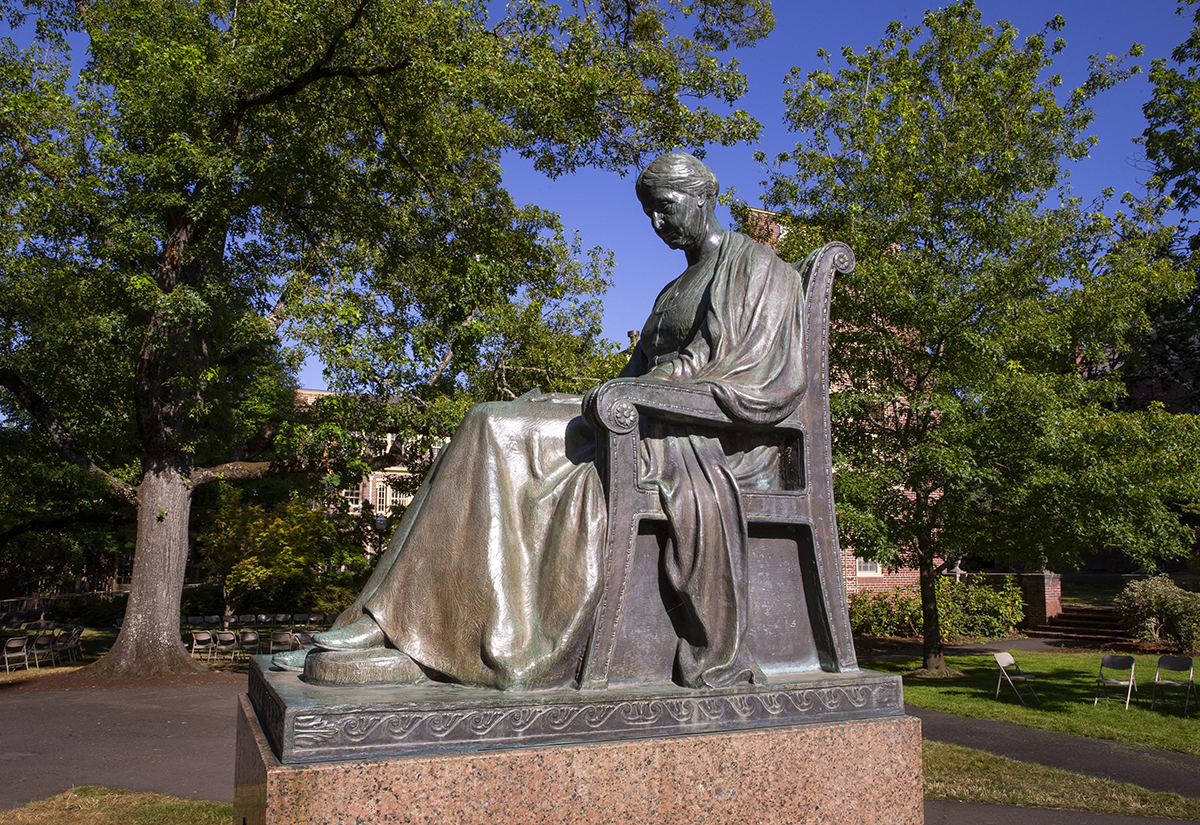
“Rewriting” history
Statues honoring racist historical figures scattered across the U.S. have toppled under public outcry the past few years. Protesters at University of North Carolina Chapel Hill ripped down a Confederate statue in August 2018. The University of Texas at Austin campus removed statues honoring Confederate leaders after contentious conversations following the 2015 Charleston, South Carolina church shooting by a white supremacist that left nine black people dead.
The issue of pioneer statues in particular is more common in the West than the rest of the U.S., which has seen more national outcry about Confederate monuments. The resounding counter-argument to removing monuments like these is that in doing so, it’s removing a piece of the area’s history and to remove it is an effort to rewrite history.
But it’s possible to both retain the historical significance of a statue while still considering and exposing its racist intentions, said Cynthia C. Prescott, a University of North Dakota associate professor whose research focuses on the North American West, gender, material culture and memory studies.
Past campus reckoning
This isn’t the first time UO and other area colleges have been forced to reevaluate symbols on campus.
In 2015, UO was pushed by the campus community to rename Dunn and Deady halls on campus after the Black Student Task Force submitted a list of 12 demands, the first being to “change the names of all of the KKK-related buildings on campus,” with Deady Hall coming first.
Schill recommended the Board of Trustees rename Dunn Hall in 2016, and it was later named “Unthank Hall” after DeNorval Unthank Jr., the UO’s first black graduate from the School of Architecture and Allied Arts. But Schill announced in 2017 that he would not recommend renaming Deady Hall, because Deady made "exceptional" historical accomplishments and the report from historians did not outweigh these. Though in the report, historians found Deady ran as a pro-slavery delegate 1857 and “promoted restricting the right to vote to ‘pure white’ men."
While the building names aren’t as visually prominent as a statue and deal with a separate history of marginalization, they still carry a legacy of racism built into Oregon’s foundation, and the task force’s efforts were the “catalyst” for future conversations, Gilbert said.
“I think at that time it was a little bit of a wake up call for everyone to look around them and think more critically about the names that we're giving things and the names by which we call the place we're studying,” he said. “What does that really mean and where does it come from ... how do we really want to represent our university?”
This was kept in mind, along with the educational value of the symbols, Schill said.
“When we looked at the halls, at Deady and Dunn ... one of the things I was very, very focused on was, we shouldn't hide history. Even the history we’re ashamed of. And if we hide history, we’re doomed to repeat it. So what we need to do is understand how we got here — understand the good and the bad,” he said.
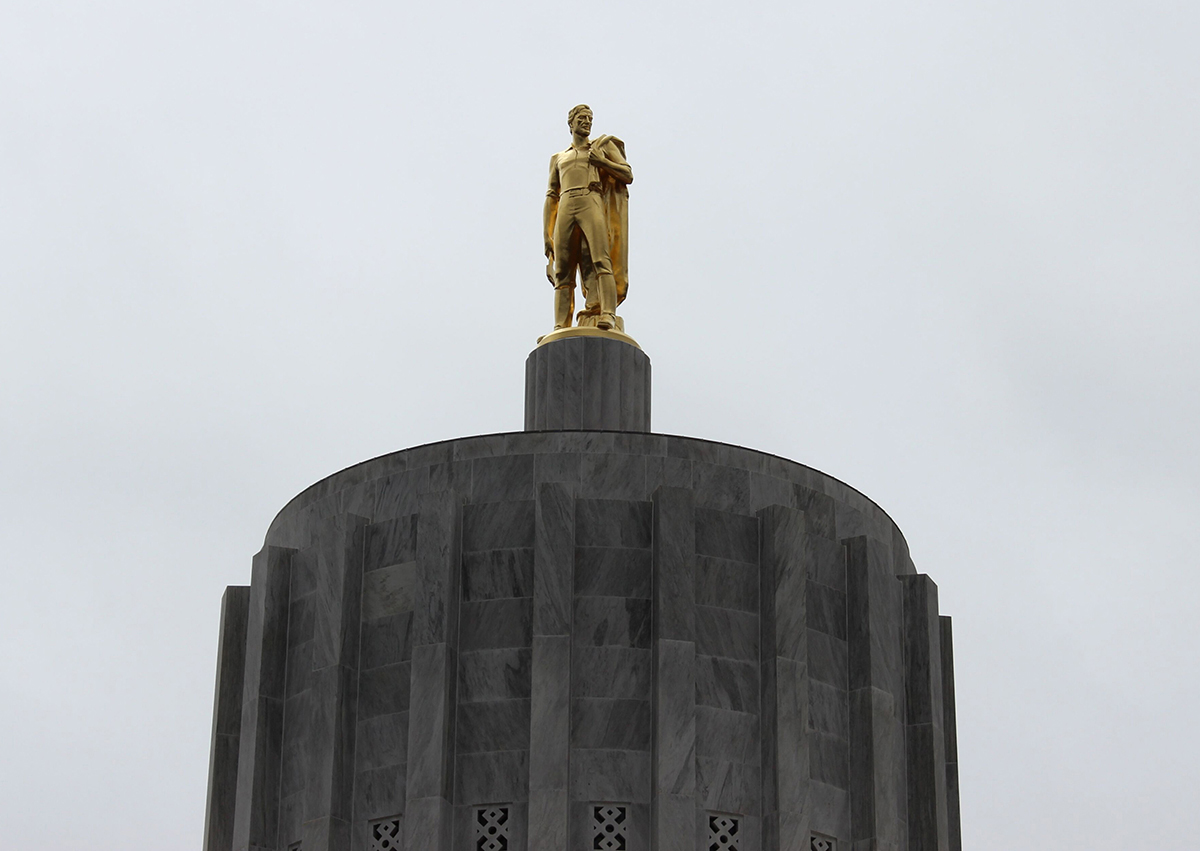
Oregon State University handled a similar issue when five campus buildings — Benton Hall, Benton Annex, Avery Lodge, Gill Coliseum and the Arnold Dining Center — came under fire for namesakes with controversial biographies.
In the summer of 2017, OSU gathered a handful of faculty and one outside historian to undertake a scholarly review of the buildings in question.
In the end, Benton Hall became Community Hall, honoring local residents who raised funds to start the college; Benton Annex, the university’s women's center, became the Hattie Redmond Women and Gender Center, after an early African-American suffragette; and Avery Lodge became Champinefu Lodge, honoring the local native Kalapuya Tribe.
Gill Coliseum and the Arnold Dining Center remained after the review found that Benjamin Lee Arnold and Amory Gill displayed some signs of forward-thinking racial acceptance, outweighing the more controversial parts of their biographies.
“A name is not only a reflection of history,” OSU spokesperson Steve Clark said. “It’s a reflection of the values and the mission in this case, of Oregon State University,”
“The fact that we learn from our mistakes and move on in the future to be a better nation, be a better state, be a better university is very important,” said Clark, who was the chair of the building and place naming committee. “It doesn’t mean that the past did not occur — it means that we continue to observe the past and learn from it. We don't necessarily have to honor all aspects of our past.”
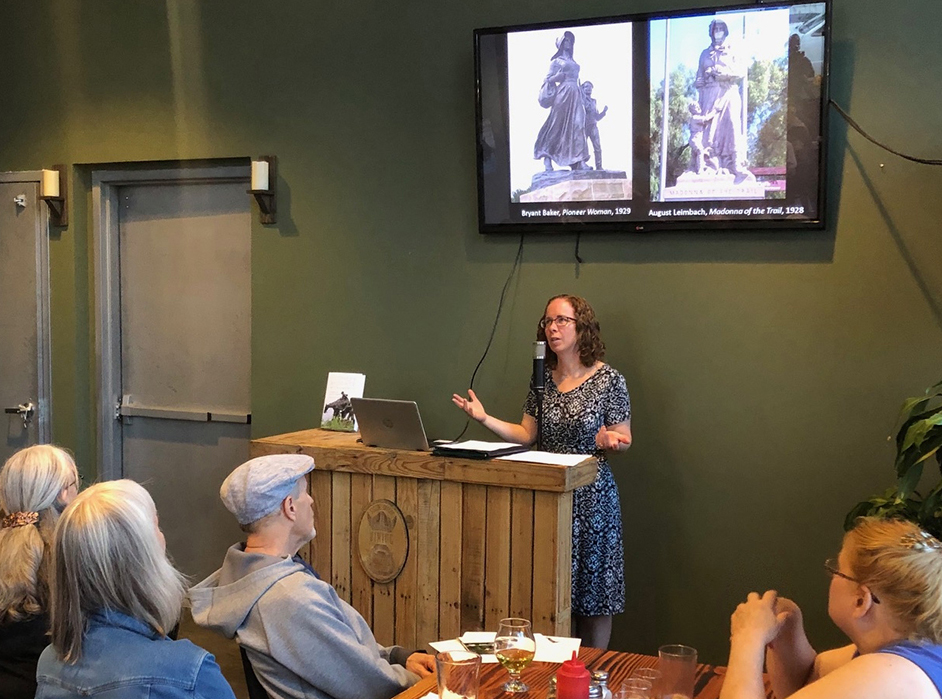
What comes next?
Now, with the second set of symbols to come under fire in the last five years, UO is taking a different approach to move forward with the Pioneer Father by convening a Committee Recognizing Our Diverse History, which includes 22 students, faculty and administrators. There are a handful of Native American stakeholders on the committee, Schill said.
It is tasked with looking into the histories of each building, art piece and statue on campus and adding historical context to those that are “not telling the full story.”
“It’s turned out to be an even bigger job than expected,” Schill said, as the UO doesn’t have a complete inventory for every piece on campus. UO's website lists 63 outdoor sculpture and building ornaments and more than a hundred buildings and landmarks.
Some options for preserving the art, such as the Pioneer Father, while contextualizing it include moving it to a museum, erecting other statues with positive depictions of Native Americans, or using two-dimensional art, like Plexiglass with the explanation of its conflict written on top.
“So you're not destroying the art, but you're confronting people visually in such a way that it impacts the way that they view this piece of art,” researcher Prescott said. “I don’t think that’s a one-size-fits-all solution, but I think it’s a really intriguing way of thinking about, how can we take this piece, keep it here but reinterpret it in a way that is meaningful. Because realistically, bronze plaques — people don't read them.”
The committee also is tasked with deciding whether to add new statues or art “recognizing people of diverse backgrounds who have contributed to the University of Oregon or the land it occupies,” UO spokesperson Molly Blancett said in an email. The university also is considering developing a walking tour to reflect the changing political and cultural landscape and finding how to incorporate these issues into academics.
But Gilbert said he is wary of just contextualizing a piece, because there’s no guarantee people will read a plaque or if the full story will truly materialize during events like campus tours.
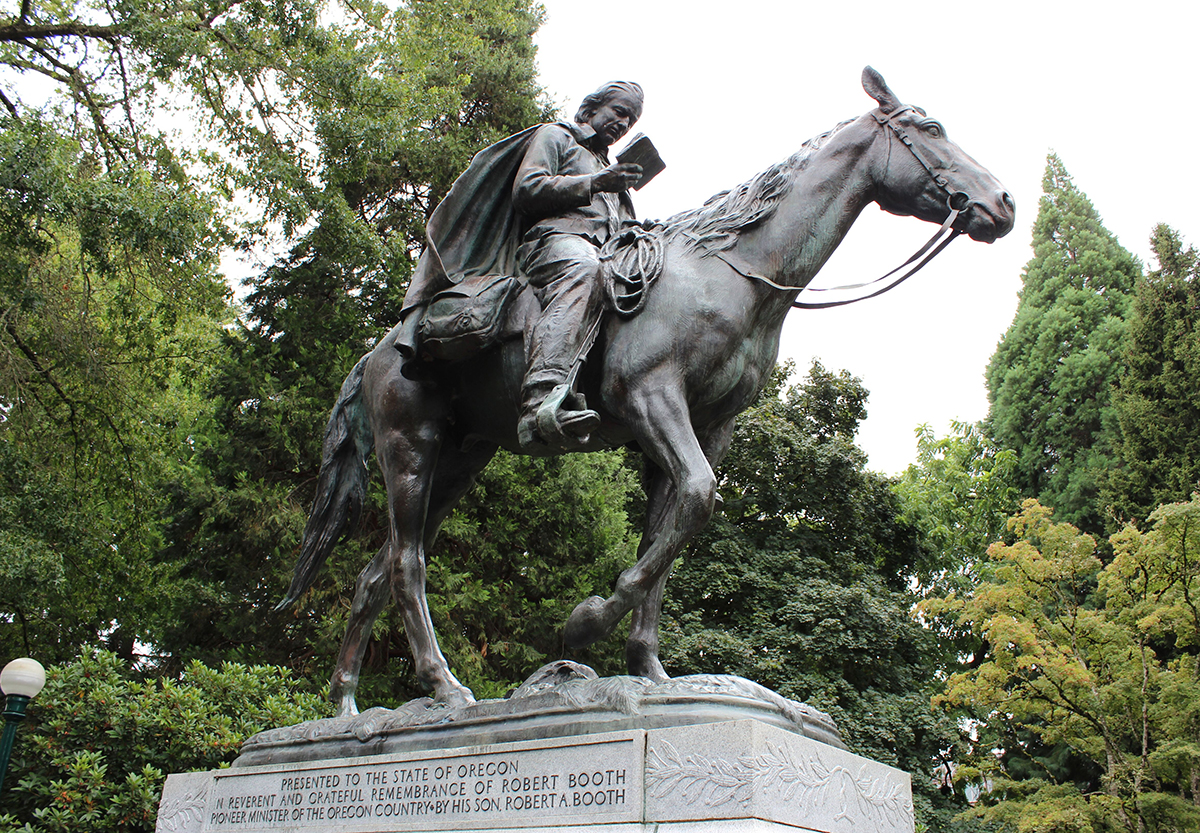
However, despite calls from those such as Gilbert and Carpenter to remove the statue and relocate it to a campus museum, “the committee will NOT consider whether monuments or artwork should be moved or removed,” Blancett said.
“I think removing something should be a last choice rather than a first choice,” Schill said. “I feel very strongly that the university’s job is education. Our job isn’t to sort of hide the bad parts of our history. It's to bring up both the good and the bad and stimulate a debate.”
This surprised Gilbert, who was under the impression after meeting with Schill months ago that all options would be considered.
“I wonder if that’s new movement within the committee,” he said, “because if that has always been the case, I feel like I was maybe led to believe differently.”
Gilbert graduated so he is no longer part of the Native American Student Union, but he hopes the university will reconsider its decision not to move the statue, because he overall enjoyed his time at UO and wants it to reflect the values of the community.
“The students who are making this push are not angry students. They're not students who have a grudge against their university,” he said. “They’re students who deeply love their university, and that's why they want to see it improve.”
Follow Jordyn on Twitter @thejordynbrown or email at jbrown@registerguard.com and follow Tatiana on Twitter @TatianaSophiaPT or email at Tatiana@registerguard.com.